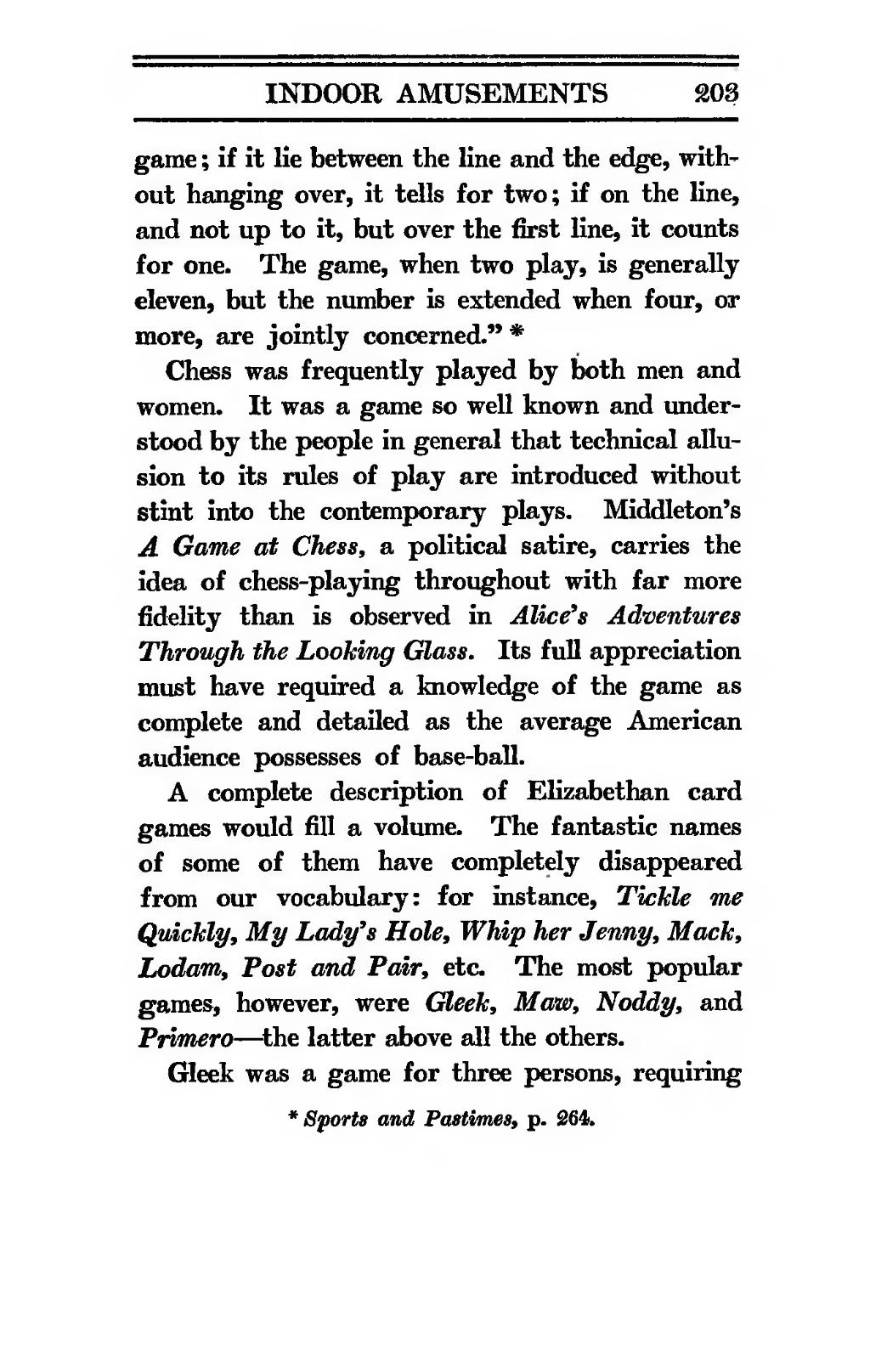game; if it lie between the line and the edge, without hanging over, it tells for two; if on the line, and not up to it, but over the first line, it counts for one. The game, when two play, is generally eleven, but the number is extended when four, or more, are jointly concerned.”[1]
Chess was frequently played by both men and women. It was a game so well known and understood by the people in general that technical allusion to its rules of play are introduced without stint into the contemporary plays. Middleton's A Game at Chess, a political satire, carries the idea of chess-playing throughout with far more fidelity than is observed in Alice’s Adventures Through the Looking Glass. Its full appreciation must have required a knowledge of the game as complete and detailed as the average American audience possesses of base-ball.
A complete description of Elizabethan card games would fill a volume. The fantastic names of some of them have completely disappeared from our vocabulary: for instance, Tickle me Quickly, My Lady’s Hole, Whip her Jenny, Mack, Lodam, Post and Pair, etc. The most popular games, however, were Gleek, Maw, Noddy, and Primero—the latter above all the others.
Gleek was a game for three persons, requiring
- ↑ Sports and Pastimes, p. 264.

